Showing her colors
July 1, 2020
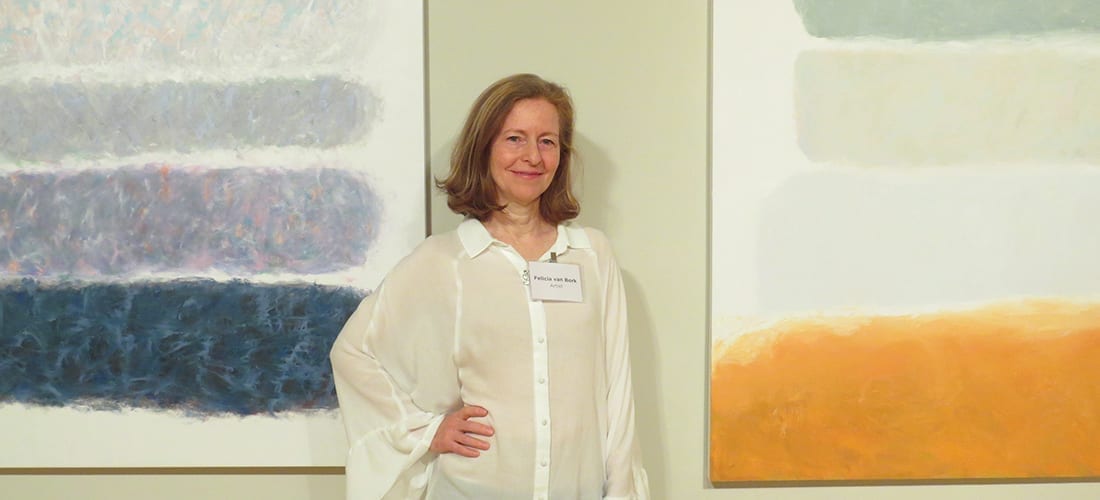
Abstract artist Felicia van Bork connects with empathy, both on and off the canvas.
By Michael J. Solender
Tubes of acrylic and oil paint neglected on dusty art-supply shelves must fantasize about consignment to a painter like Davidson’s Felicia van Bork.
On her canvases, strokes of tangerine orange are freed to dance with straw-hued amber, dashes of Ceylon-sapphire blues chat softly with aquamarine, and brilliant greens collide so vibrantly even emeralds would be envious. In van Bork’s hands, pigment tells stories through unusual collaborations of both subtlety and brashness.
Color is van Bork’s lingua franca, a universal though complex language the abstract painter employs to create narrative and evoke emotion in a way that draws people to her work.
“I’m married to a poet (Alan Michael Parker, Davidson College’s Douglas Houchens Professor of English),” van Bork says “and he makes meaning by combining words you would not expect to see together. Similarly, I put together colors and shapes in new ways to produce opportunities for meaning-making.”
The Toronto native has not let the recent coronavirus shutdown keep her from being productive. If anything, the Charlotte arts-scene stalwart is busier than ever. She’s conducted online workshops through the McColl Center for Art + Innovation, where she’s twice been in residence and manages the printmaking studio. Her large-scale oil painting “5 Gray Stones,” was featured on the cover of ArtAscent magazine, an international art and literature journal. She participates in no less than three weekly virtual critique sessions, and she still finds time to furiously tend to her garden.
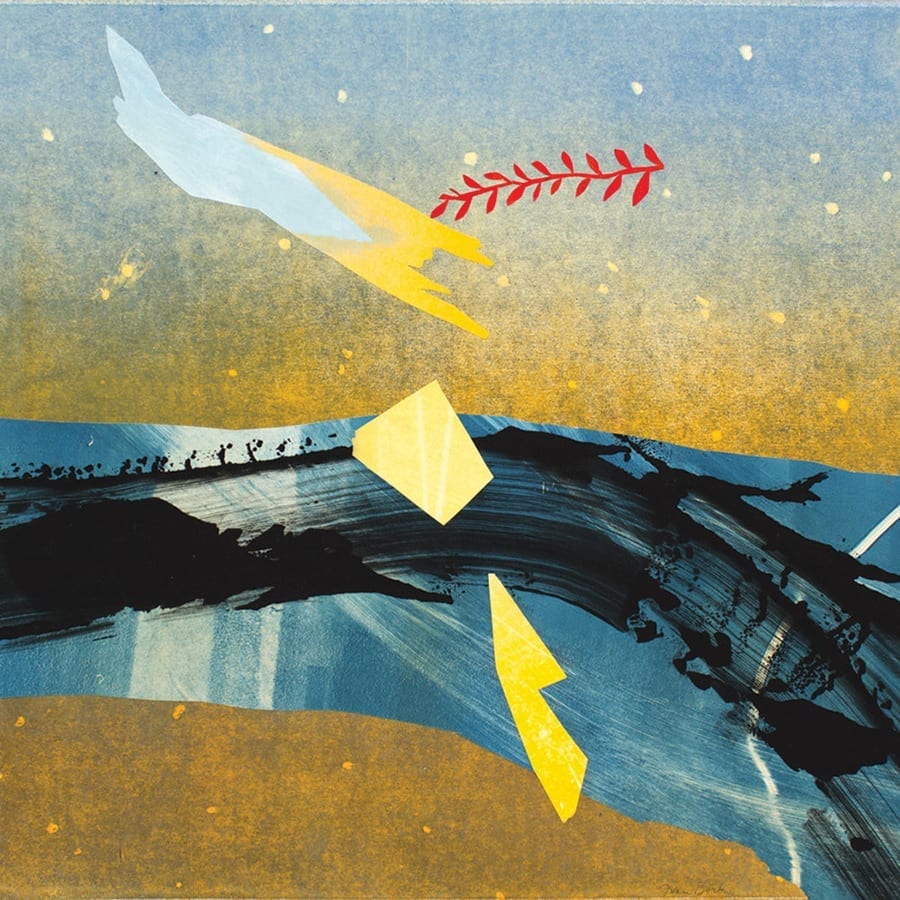
Her work is currently featured at the GreenHill Center for North Carolina Art in Greensboro in a special exhibition on N.C. Women Abstract Painters. The exhibition showcases a series of her color fields and collages and displays a re-creation of her studio, complete with works in progress and small studies that offer viewers a peek into her process.
“I became familiar with Felicia’s work more than a decade ago when we exhibited a grouping of her self-portraits,” says Edie Carpenter, director of curatorial and artistic programs at GreenHill. “She is unabashed in her pursuit of beauty through her depth of investigation with observed color relationships and ongoing voyage into color groupings.”
Van Bork enjoys a profound connection with color, from tonality and temperature to light reflectivity, intensity and countless nuances along a broad continuum. Her pursuit is that of a dogged cryptographer, continually working to reveal the devilish code behind colors’ complex relationships with each other.
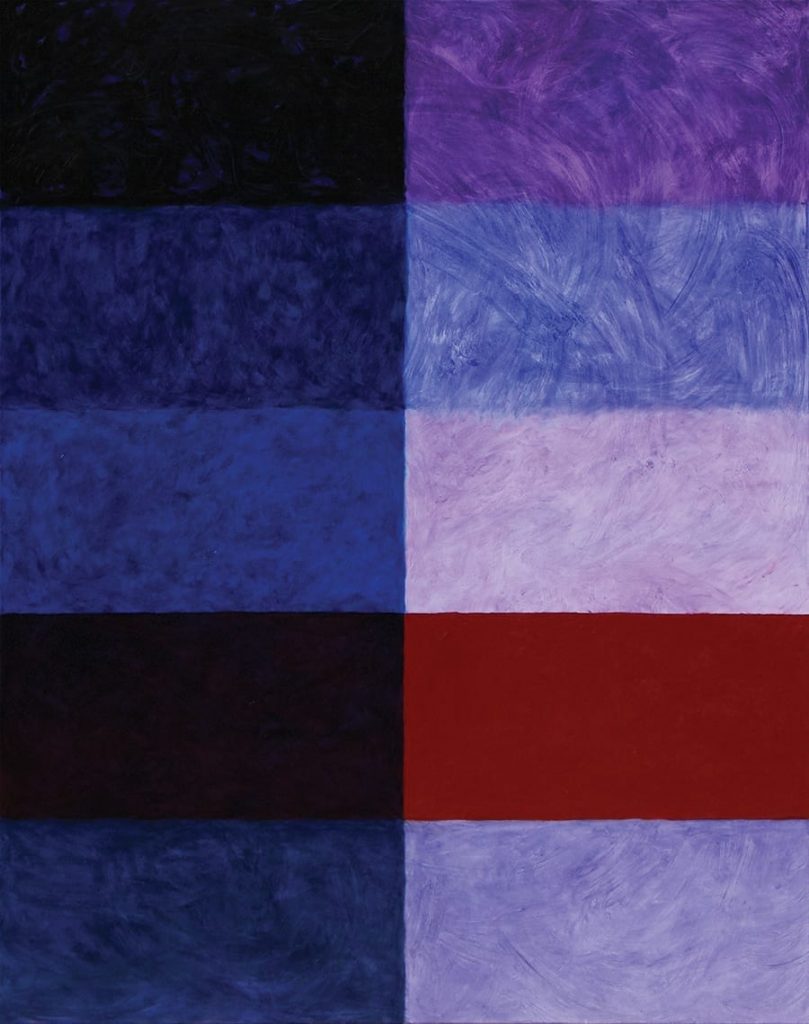
She is as thoughtful at naming her work as she is in creating it. “I tried extremely hard to think of a correct title for my color paintings and came up with ‘Radical Tenderness,’ van Bork says. “That seemed to hit the nail on the head. In searching, I discovered a manifesto called Radical Tenderness, which has to do with being empathetic to everything around you. There is an aching need for empathy and tenderness in the world, and I’m teaching myself these things as fast as I can.”
Sensitivity and understanding for others are byproducts of van Bork’s explorative nature. She thrives on interaction with other artists, gaining energy from their feedback and input into her work. “It’s enormously helpful to me to know that artists are going to be seeing my work in progress every week,” van Bork says.
Her own counsel and advice are often sought by her peers. Since the shutdown, van Bork has hosted a weekly virtual forum where more than a dozen of Charlotte’s talented visual artists share cocktails, works in progress and critiques.
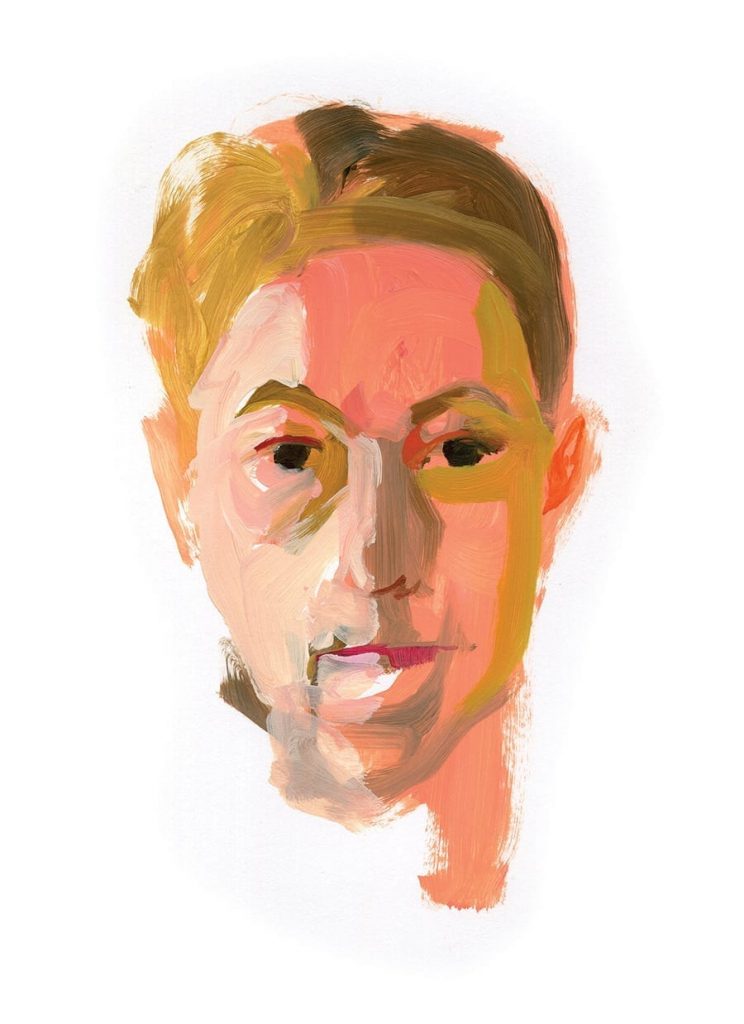
“I have great respect for Felicia’s opinion, as do her colleagues,” says Susan Brenner, an artist and professor emeritus of painting at UNC Charlotte. “She has a distinct sensibility and such exuberance in her work. Her critique emphasizes what’s working and is shared in such a positive way that it is particularly valued.”
In addition to her color fields, printmaking and collage work, van Bork continues a creative portraiture project, one she uses to hone her students’ skills. Here, she develops discipline with a technique where entire portraits are created using only 20 brush strokes. By allowing each stroke to mark only as far as a loaded brush will take it, the painter is forced to keep the brush in contact with the canvas and recognize the importance of each stroke. “This means making much bolder, longer, and bigger strokes than typical,” van Bork says. “The portrait tends to be a very fussy subject, and I would like my students to tackle it with the energy with which they would do a landscape.”
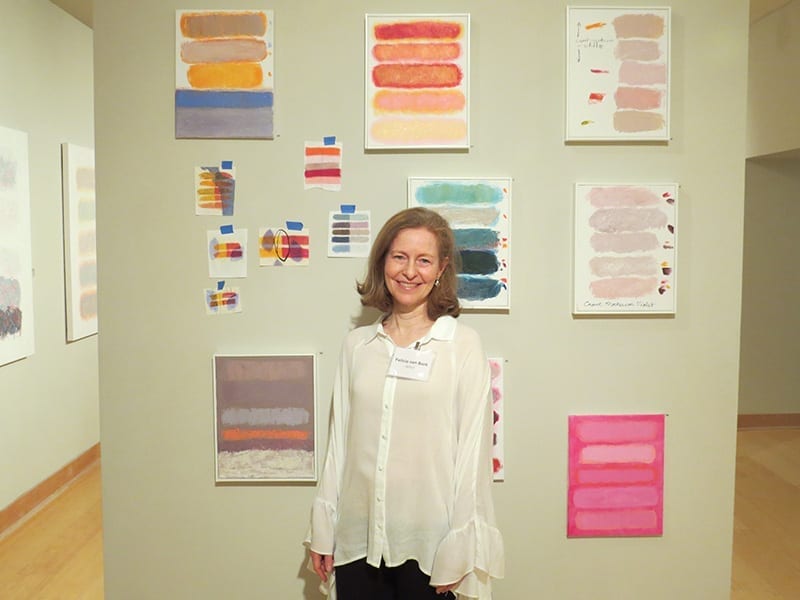
Curator, educator and artist Crista Cammaroto calls van Bork’s work distinctive in how it connects with viewers through emotion and intellect. “Felicia connects the empathic and emotive side of the brain to [the] logic and language side in her work,” Cammaroto says. “She has the uncanny ability to distill the experience into equal parts with different colors, always harmonizing. People find in her work something they can relate to.”
While it’s tempting to label her work cerebral, van Bork doesn’t overthink her process. She acts with an intuitive nature. “I go straight to the canvas,” she says. “My [process is like] hockey. Hockey is a ridiculous game. They have an object they must get into the net, but then they must do it on skates, on ice with long bent sticks. I’m making [my work] as hard for myself as I can. And that leads to a different kind of elegance, just like hockey players are beautiful in their elegance the way they play. Their stick handling is amazing.”
For Felicia van Bork, her artistic shots are always on goal. SP
N. C. Women Abstract Painters at GreenHill Center for North Carolina Art in Greensboro will remain on display at least through August, according to curator Edie Parker. The exhibition features the work of van Bork, Eleanor Annand, Barbara Ellis, Celia Johnson and Katy Mixon. To learn more, visit feliciavanbork.com and greenhillnc.org.
Photograph top by Janay Green, others courtesy of Felicia van Bork